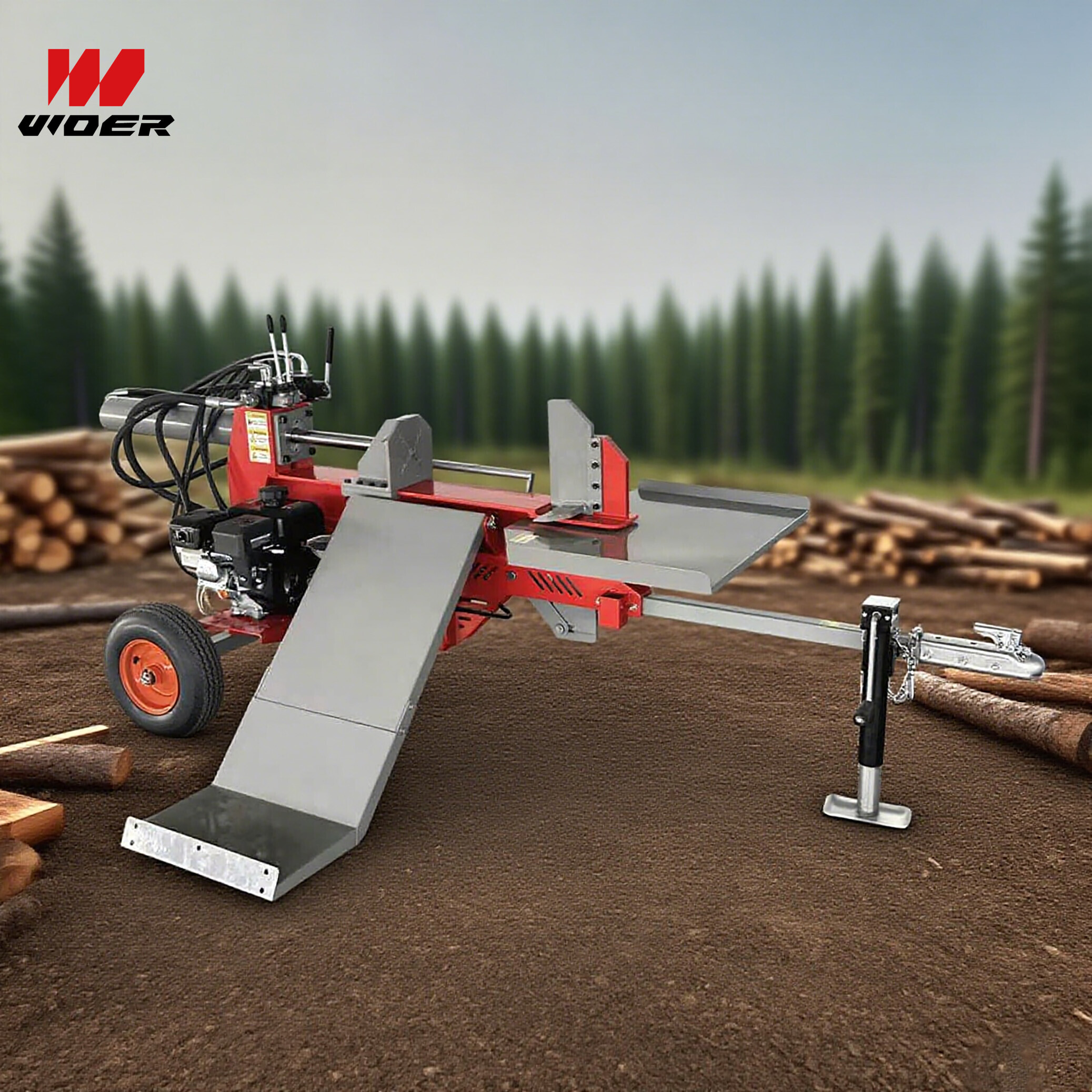Navigation
Contact us
Phone
Message

Finding alog splitter for sale cheap does not mean accepting low performance. This guide helps procurement teams, operators, technical evaluators and decision-makers identify cost-effective log splitter options—hydraulic, electric, kinetic or gasoline—while preserving safety, durability and ROI.
Overview: What a Log Splitter Does and Why Choice Matters
A log splitter converts manual chopping into a mechanized process, improving throughput and reducing operator fatigue. Whether you need a wood log splitter for occasional home use or a vertical log splitter for heavy industrial workloads, matching machine type and duty cycle to application is crucial. Key performance indicators include splitting force (measured in tons), cycle time, throughput (logs per hour), power source, and maintenance intervals.
Types of Log Splitters: Pros, Cons and Typical Applications
Hydraulic Log Splitter
Hydraulic log splitters offer smooth, high-force operation with adjustable cycle speeds. They are the go-to choice for commercial wood yards and contractors who require consistent splitting of large-diameter logs. Advantages include high tonnage (12–30+ tons), reliability, and compatibility with tractor PTOs or standalone gasoline engines. Drawbacks: heavier weight and more complex hydraulic maintenance.
Electric Log Splitter / Electric Log Splitter
Electric log splitters are quieter, cleaner, and require less maintenance compared to gasoline models. They excel for residential or light commercial use where power is available. Typical electric models deliver 5–10 tons of force and are valued for lower operating costs and reduced emissions. Consider duty cycle limitations when evaluating for extended daily use.
Kinetic Log Splitter
Kinetic log splitters store kinetic energy in a flywheel and release it to split logs rapidly. They often provide faster cycle times and can be more fuel-efficient under certain loads. Kinetic machines are lighter and simpler mechanically but can be noisier and may require different safety considerations.
Gasoline / Log Splitter Gasoline
Gasoline-powered log splitters are portable and suited for remote sites without electrical supply. They typically offer a good balance of power and mobility for contractors and rural operations. Maintenance includes engine service and fuel management; emissions and noise are higher than electric alternatives.
Vertical Log Splitter
Vertical log splitters are designed for tall or awkward logs that are easier to split in a vertical orientation. They are commonly hydraulic and are ideal for sawmills, timber yards, and professional users handling large or uncured timber.
Comparison Table: Quick Specs and Cost Guidance
How to Find a Log Splitter for Sale Cheap Without Sacrificing Quality
Cost-effective procurement relies on balancing price with lifecycle cost. Start by defining operational needs: average log diameter, daily throughput, site power availability, and portability. Avoid buying the cheapest model by sticker price; instead estimate total cost of ownership (TCO): acquisition, fuel/electricity, maintenance, downtime, parts and resale value.
- Buy to required tonnage and cycle duty—overspecing wastes capital, under-specing costs downtime.
- Consider remanufactured or certified pre-owned units from reputable dealers; warranties matter.
- Negotiate bulk pricing, service contracts, and spare-parts packages to lower TCO.
- Time purchases off-season when suppliers discount inventory.
- Evaluate direct manufacturer sourcing to remove distributor margins.
Technical Evaluation Checklist for Procurement and Approval
- Rated splitting force and tested cycle life—request test reports or duty cycle charts.
- Motor or engine specs: kW/hp, voltage, fuel consumption, and emission profiles.
- Hydraulic system details: pump flow (L/min), relief valve setting, oil type and filtration.
- Safety features: two-handed controls, guards, emergency stop, CE/EN/ASTM compliance.
- Serviceability: access to filters, hoses, seals, and commonly worn parts.
- Warranty, spare parts lead time, and local service network.
Standards, Safety and Environmental Considerations
Specify machines that meet relevant standards: CE/EN for Europe, ASTM guidelines where applicable, and ISO quality management references. For electric log splitter models, confirm electrical safety (e.g., IEC standards) and grounding provisions. Hydraulic systems should follow pressure component standards and use appropriate hydraulic oil to maintain performance in the expected temperature range.
Safety training and documented lockout/tagout procedures are essential for operators. Provide PPE recommendations and regular inspection schedules to prevent failures that increase total cost.
Maintenance, Storage and Transport
Planned preventive maintenance extends service life. Keep a maintenance log for hydraulic oil changes, filter replacements, and engine tune-ups. For storage, drain fuel or use stabilizer, protect electrical components from moisture, and secure the wedge and beam during transport. Vertical log splitters often require stabilizing blocks to avoid tipping during transit.
Common Procurement Mistakes and How to Avoid Them
Common errors include selecting by price alone, underestimating duty cycle, ignoring local service capability, and failing to validate safety certifications. Avoid these by involving operators and technical evaluators early, running a pilot trial if possible, and requiring performance guarantees in the purchase contract.
Case Example and ROI Snapshot
A municipal public works team replaced manual splitting with a mid-range hydraulic log splitter rated at 20 tons. Initial cost was moderate; however, labor hours dropped 70% and throughput increased threefold. Payback occurred within 18 months when reduced labor and fuel savings were accounted for—illustrating that a slightly higher-quality purchase can save money long-term.
Final Recommendations and Next Steps
To secure a quality log splitter at a competitive price, define operational requirements clearly, involve stakeholders from operations and finance, require standards compliance, and prioritize TCO over upfront cost. Pilot-testing units, negotiating service terms and planning for parts availability will protect uptime and investment.
Contact our procurement specialists to receive a shortlist of matched hydraulic, electric, kinetic and gasoline log splitter models with transparent TCO estimates and warranty options. We will help you transform a best-price search into a best-value acquisition.

This stunning beach house property is a true oasis, nestled in a serene coastal community with direct access to the beach.
Contact
West Street, Melbourne Victoria 3000 Australia